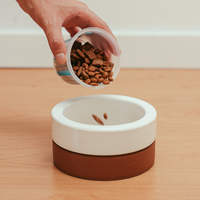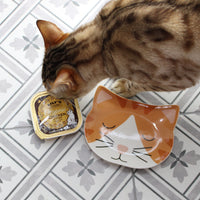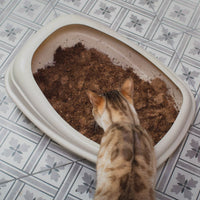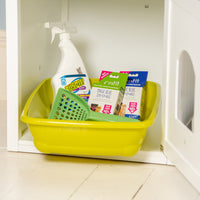When it comes to grooming, cats are famously fastidious. Their self-cleaning habits often make pet owners wonder: Do I need to bathe my cat? The short answer is that most cats don’t require regular baths, but there are exceptions. Let’s explore the ins and outs of cleaning a cat, including when and how to bathe a cat, and whether baths are beneficial or necessary.
Why Don’t Most Cats Need Baths?
Cats are naturally equipped with tools to keep themselves clean. Their tongues have tiny, hook-shaped structures called papillae that effectively remove dirt and loose fur. This self-grooming habit is not only hygienic but also helps regulate their body temperature and maintain healthy skin.
However, there are situations when a cat’s grooming abilities may fall short, and that’s when a cat bath becomes necessary.

When Should You Bathe a Cat?
While cats generally handle their own grooming, here are scenarios when bathing your cat might be beneficial:
- Fleas or Skin Conditions: If your cat has fleas, a bath with cat bath shampoo designed to tackle pests can help eliminate them. Shop our flea and tick prevention range here.
- Dirty or Sticky Fur: Cats that get into something messy, oily, or sticky may require a wash to prevent them from ingesting harmful substances while grooming themselves.
- Health Issues: Some health conditions, such as obesity or arthritis, can make it difficult for a cat to groom certain areas of their body. A gentle cat wash can help keep them clean.
- Kittens: Young kittens, particularly those under 8 weeks old, may need occasional baths if they become soiled, as they are still learning self-grooming. If you’re wondering can you bathe a kitten? the answer is yes—but proceed with care.
- Allergies: If someone in your household has allergies to cats, occasional bathing can reduce dander and allergens on your cat’s coat.
How to Bathe a Cat Properly

Bathing your cat requires preparation and patience. Follow these steps for the best results:
1. Prepare Your Supplies
Before you begin, gather everything you need:
- Cat-safe shampoo (avoid human products, which can irritate their skin). Shop cat shampoos here.
- A non-slip mat for the sink or tub
- A cup or gentle spray nozzle for rinsing
- Towels for drying. Our drying mitts make a great fuss free option!
2. Create a Calm Environment
Cats can be apprehensive about water. Choose a quiet room and consider placing a towel or rubber mat in the sink or tub to give your cat a sense of stability. This is especially important when you’re learning how to bathe a cat that hates water.
3. Gently Introduce Water
Use lukewarm water to wet your cat’s fur. Pour or spray water gently, avoiding their face. You can clean their face with a damp washcloth instead.
4. Apply Shampoo
Lather a small amount of cat bath shampoo into their fur, focusing on dirty or flea-infested areas. Be sure to follow the shampoo’s instructions to ensure safety and effectiveness, especially for flea baths for cats.
5. Rinse Thoroughly
Use clean, lukewarm water to rinse out the shampoo. Any leftover product can irritate your cat’s skin, so be thorough.
6. Dry Your Cat
Wrap your cat in a towel and gently pat them dry. Avoid using a hair dryer unless it’s on the lowest setting and your cat is comfortable with the noise.
How to Bathe a Kitten
If you’re learning how to wash a kitten, the process is similar but requires extra care. Use only a small amount of water, and ensure the room is warm to prevent your kitten from becoming chilled. After the bath, keep the kitten wrapped in a towel until completely dry.
Should You Bathe Cats Regularly?

For most cats, regular bathing is unnecessary. Overbathing can strip their coat of natural oils, leading to dry, irritated skin. If you’re wondering, should you bathe cats? or are baths bad for cats? the answer lies in moderation. Limit baths to when they’re truly needed.
Tips for Cats That Hate Water
If your cat dislikes water, here are some strategies to make bathing easier:
- Use a shallow sink or basin instead of a large tub.
- Enlist the help of another person to gently hold your cat.
- Keep sessions short to minimise stress.
- Offer treats and praise before, during, and after the bath to create positive associations.
Alternatives to Bathing
If bathing your cat is too stressful, consider these alternatives:
- Cat Wipes: These pre-moistened wipes are a quick and easy way to clean your cat’s fur.
- Brushing: Regular brushing helps remove dirt and loose fur while stimulating natural oil production.
- Dry Shampoo: Some dry shampoos are designed for cats and can freshen their coat without water.
How to Bathe a Cat With Fleas
If your cat has fleas, bathing can help reduce the infestation. Use a flea-specific cat bath shampoo, and work it into their coat to kill fleas effectively. Be sure to rinse thoroughly and follow up with a flea prevention treatment recommended by your vet. Shop our flea and tick prevention and treatments here.
Final Thoughts: Should I Wash My Cat?

Most cats don’t need regular baths, thanks to their excellent grooming habits. However, there are situations where bathing your cat becomes necessary. By understanding how to give your cat a bath and choosing the right products, you can ensure the process is as stress-free as possible for both you and your feline friend.
If you’re still unsure, consult your veterinarian for advice tailored to your cat’s specific needs. Whether it’s a routine cat wash or tackling fleas, your cat’s health and comfort should always come first.
Here at Lords & Labradors we’ve carefully selected all the best products to suit your cats needs, from grooming, to food and cat trees we’ve got it all! Shop cat essentials now.

































































.jpg?v=1727958217793&options=)






























